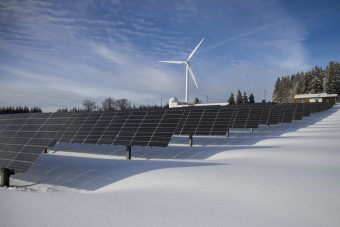
With only 43% of its households with access to electricity, Odisha’s economic development lags behind that of other states in India. However, it is home to rich water reserves, wildlife, forest, minerals, and renewable energy sources, which together can help boost the state’s economy.
Let’s take the example of solar energy. In recent years, Odisha and its international partners have set out to boost the evelopment of renewable energy in the state and now aim to identify and scale up potential solar power sites. Yet, challenges remain. Despite 300 clear sunny days every year representing a huge solar potential (Odisha receives an average solar radiation of 5.5 kWh/ Sq. m area), only 1.29 percent of Odisha’s total energy capacity stems from renewable sources. Considering that Odisha is planning to increase its solar capacity from 31.5 Megawatts (MW) to 2,300 MW in the next five years, the state must step up its efforts and enact relevant policies to meet its solar energy goals.
This, in turn, could benefit local businesses and spur economic growth. Indeed, climate finance provides another window to mobilize potential investment to scale up the development of renewable energy while addressing global issues such as climate change.
India submitted their Intended Nationally determined Contribution (INDCs) prior to the Paris Climate Change Conference (COP 21). This document highlights the need for capacity building and financing to implement the country’s climate change mitigation and adaptation strategy. India aims to achieve an additional 175 Gigawatts (GW) capacity in renewable energy within a few years, of which 100 GW are to be generated from solar power. This target will require tremendous investments in the next decade. Moreover, it is expected that $17 billion in investment will be required annually for solar power alone, up from the current $6 billion annual investment in the entire renewable energy sector in India.
Climate finance could fill some financing gaps to realize such wide-ranging investment in the sector. Further south in Sri Lanka, the Sri Lanka Climate Fund is part of the country’s national strategy to channel international climate finance and support additional private sector participation to spur renewable energy development. The country is trying to lure the international community into scaling up investment in climate finance in order to meet its 20 percent renewable energy target.
Expecting some outcome from the Paris Climate Change Conference, the World Bank Group already announced it will increase its financing with climate co-benefits up to $29 billion a year by 2020, with the support of its members. We know that this engagement will require a lot of efforts to become a reality, but we also know that it will help achieve our goals: Ending extreme poverty and boosting shared prosperity.
Our initiatives with the Public-Private Infrastructure Advisory Facility in both the state of Odisha in India and Sri Lanka are just some of the examples of how we intend to move in that direction.
Source: The World Bank

